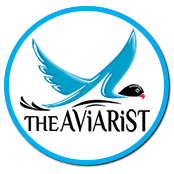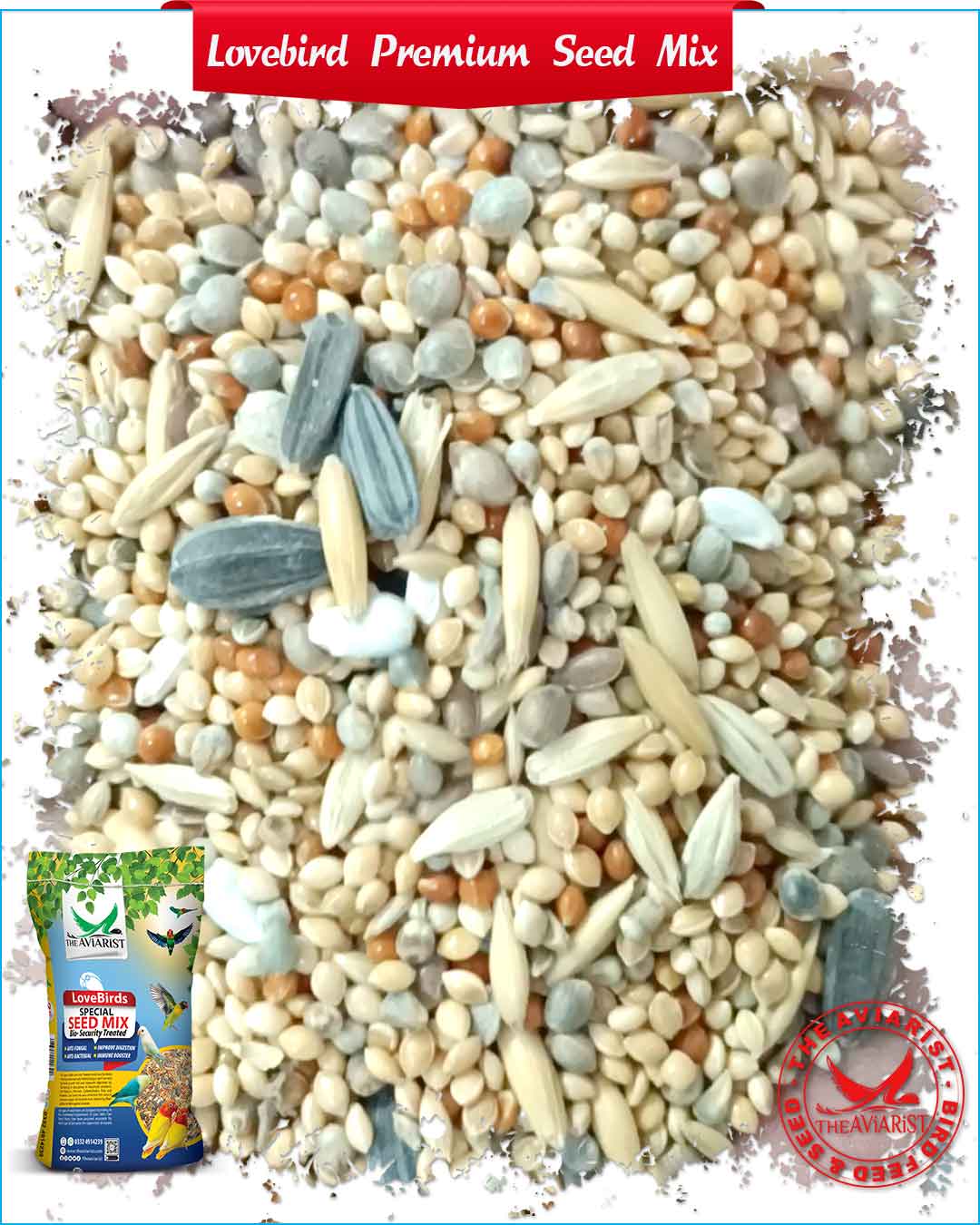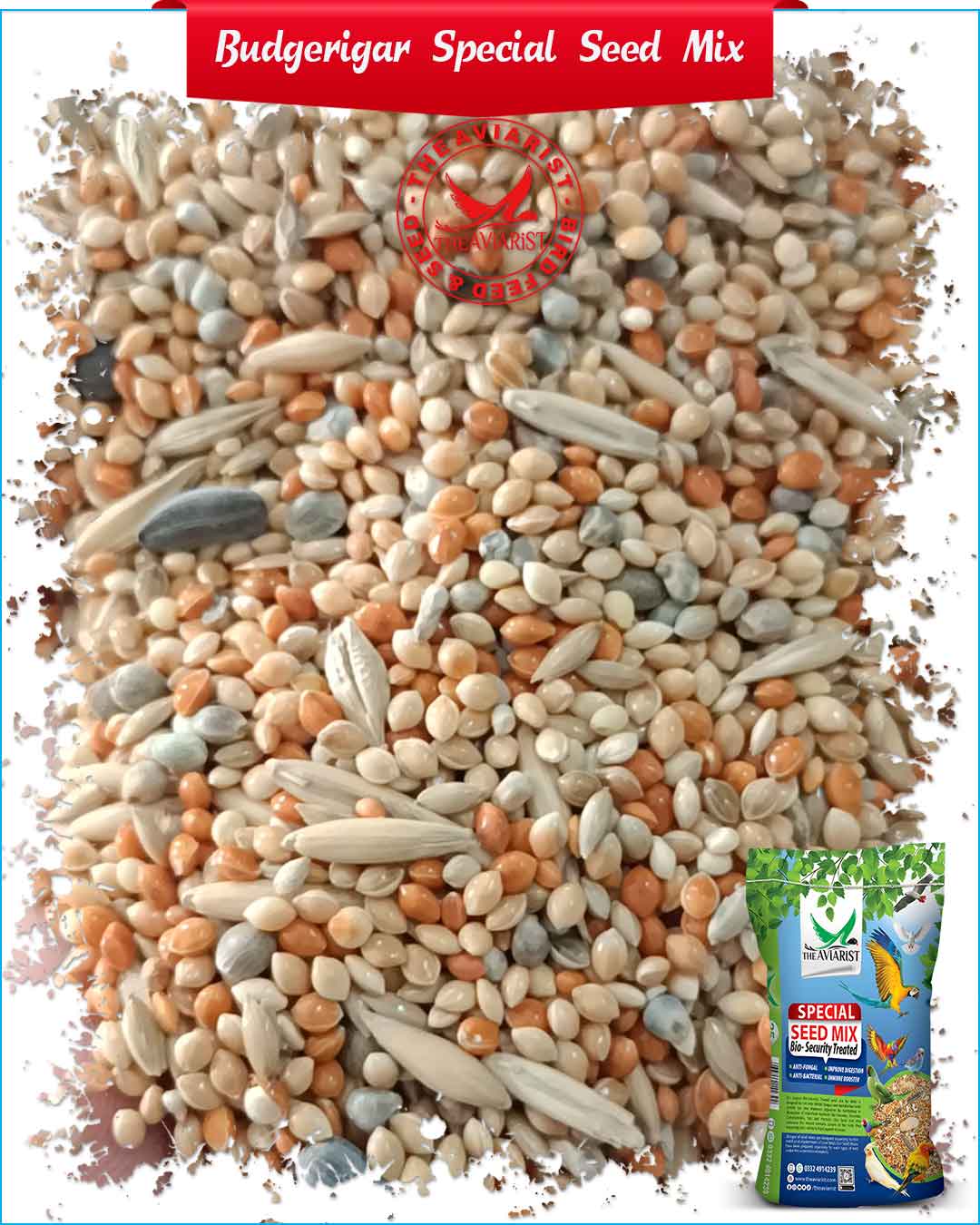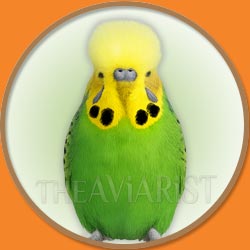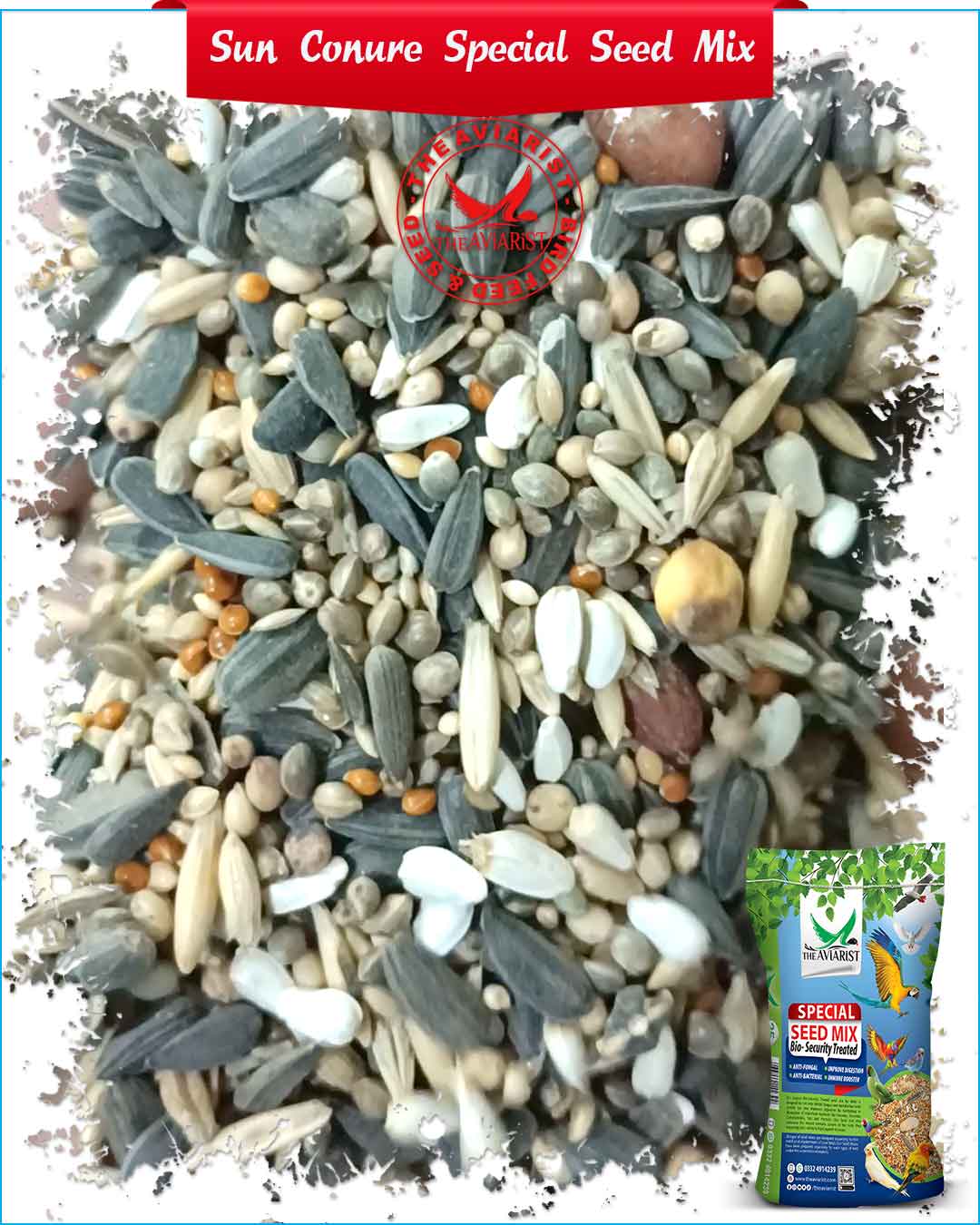Cockatiel

The Cockatiel Parrot (Nymphicus hollandicus) is one of the most popular and widely kept companion birds in the world. Native to Australia, this charming parrot is admired for its friendly personality, manageable size, and attractive appearance. Measuring around 12–14 inches in length, with a slender body and long tail feathers, the Cockatiel is easily recognized by its distinctive crest that expresses emotions and its bright orange cheek patches.
Cockatiels are highly social, gentle, and affectionate birds, often forming strong bonds with their owners. They are excellent whistlers and mimics, capable of learning tunes and household sounds. Their calm nature makes them suitable for both beginner and experienced bird enthusiasts.
In captivity, Cockatiels thrive on a balanced diet of pellets, seeds, fresh vegetables, and fruits, along with proper care and regular interaction. With attentive management, bringing joy and companionship. Additionally, their wide range of color mutations, such as lutino, pied, pearl, cinnamon, and albino, adds to their popularity among breeders and hobbyists.
A Complete Nutrition
At The Aviarist, we understand that the health, vitality, and breeding success of Cockatiel depend largely on their diet. Our specially formulated Seed Mix for Cockatiel is bio-security treated, ensures that Cockatiel receive safe, clean, and nutrient-rich food that supports their feather health, energy levels, fertility, and overall wellbeing.
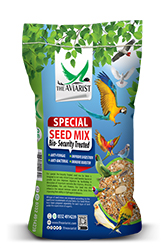
Special Seed Mix
Unlike ordinary seed mixes, our formula goes beyond just filling the seed cup. Every batch is carefully treated and enhanced to support the overall well-being, breeding performance, and immunity of your Cockatiel.
The Special Seed Mix is our core variant, trusted by many breeders. What makes it unique is that, it is regularly adjusted and upgraded according to seasonal changes and breeding requirements.
Tailored nutrition for breeder pairs
Adjusted fat and protein ratios for better breeding outcomes
Ensures strong fertility, better hatch rates, and healthier chicks
This mix is especially beneficial during pre-breeding and general breeding periods.


Key Ingredients:
| Ingredient | اجزاء |
| PROSO MILLET | سفید چینا |
| RED PROSO MILLET | لال چینا |
| CANARI SEED | کنیری |
| PEARL MILLET | باجرہ |
| HEMP SEED | بھنگ کے بیج |
| SUNFLOWER SEED | سورج مکھی |
| SAFFLOWER SEED | قرتم |
| OAT SEED | (جوی (جئی |
| BARLEY SEED | جوء |
| ROASTED CHICKPEAS | بھنے ہوئے چنے |
Price Rs.250/Kg
Available in 10Kg & 25Kg Packing
Key Features
1. Bio-Security Treated Seeds
Every seed in our mix undergoes a strict bio-security process. This includes anti-fungal treatment that prevents the growth of harmful fungi such as Aspergillus, which can cause serious respiratory infections in birds. Additionally, the mix is treated to eliminate bad bacteria that often grow in untreated seeds and may lead to digestive or immune-related health problems.
2. Enhanced Digestion
Birds have a delicate digestive system that can sometimes struggle with raw seeds when kept in controled environment. To address this, our seed mix is enriched with special enzymes that aid in the breakdown and absorption of nutrients. These enzymes improve gut health, reduce digestive stress, and maximize nutrient utilization, ensuring that birds get the most from every seed they consume.
3. Immunity-Boosting Formula
A strong immune system is essential for protecting birds against common infections. Our blend is fortified with immunity-enhancing agents that help strengthen their natural defenses. This means your birds are better equipped to fight off seasonal illnesses, bacterial challenges, and environmental stressors.
4. Species-Specific Nutrition
Unlike generic bird seed blends, The Aviarist seed mix is specially crafted for species specific, keeping their natural habitat and dietary patterns in mind. The selected seeds provide the right balance of proteins, healthy fats, vitamins, and minerals that match their natural dietary needs.
Benefits
Healthier Plumage & Brighter Colors
Proper nutrition enhances feather quality, resulting in shinier, stronger, and more vibrant plumage—a sign of a healthy bird.
Boosted Energy & Vitality
With a balanced nutritional profile, birds remain more active, playful, and energetic, reflecting their natural behavior.
Stronger Immunity Against Diseases
The immunity boosting shield protect birds from bacterial and viral threats.
Improved Digestion & Nutrient Absorption
The added enzymes prevent bloating, indigestion, and seed waste, ensuring maximum nutritional benefit.
Longevity & Quality of Life
A safe and nutrient-rich diet contributes to a longer, healthier, and happier life for birds.
Breeding Benefits
Bird breeding requires an optimal diet rich in energy, proteins, and essential micronutrients. The Aviarist Seed Mix is designed to support the breeding cycle in several ways:
Enhanced Fertility in Pairs
Nutrient-rich seeds, combined with immune-boosting agents, improve fertility rates and increase the chances of successful breeding.
Stronger Egg Production
The bio-secure and enzyme-treated formula ensures the hen’s body efficiently absorbs calcium and proteins, leading to stronger, healthier eggs with better hatchability.
Healthy Chick Growth
Parents fed on this seed mix pass on enhanced nutrition to their chicks, ensuring stronger immunity, better feather growth, and healthy development from the very first days.
Reduced Breeding Stress
With improved digestion and higher energy reserves, breeding pairs remain less stressed during mating and chick-rearing, resulting in more consistent breeding success.
Cockatiel
The Charming Companion Parrot
Cockatiels are affectionate and social by nature, often forming strong bonds with their owners. They are highly interactive, enjoy learning simple tricks, and are excellent whistlers—many can even mimic tunes and household sounds. With proper care, including a nutritious diet of high-quality seed mixes, fresh vegetables, fruits, and cuttlebone for calcium, Cockatiels can live for 15–20 years, bringing long-lasting companionship.
Appearance
The Cockatiel (Nymphicus hollandicus) is a small, elegant parrot species known for its charming looks and expressive crest. Native to Australia, it typically measures 12–14 inches (30–35 cm) in length with a slender body and long pointed tail that makes up nearly half its size. Cockatiels have a soft grey base color, with the most distinguishing feature being the bright orange cheek patches and a prominent yellow face and crest in males. Females usually display duller facial colors with more grey tones.
Their upright crest is highly expressive, rising or lowering to show moods such as curiosity, excitement, or relaxation. Over the years, selective breeding has introduced several color mutations such as lutino (yellow with orange cheeks), pied, pearl, albino, cinnamon, and white-faced varieties, making them one of the most visually diverse pet parrots. Their delicate appearance, coupled with their graceful feather patterns, makes Cockatiels a favorite among bird lovers worldwide.
Personality and Behavior
The Cockatiel Parrot is cherished for its gentle, affectionate, and social nature. Known as one of the friendliest companion birds, Cockatiels enjoy human interaction and often form strong bonds with their owners. They are playful yet calm, making them suitable for both beginners and experienced bird keepers. These parrots are also highly expressive—using their crest, body language, and whistling sounds to communicate moods. While not as strong talkers as larger parrots, Cockatiels are excellent whistlers and mimics, often learning tunes or household sounds. They thrive on attention and companionship, whether from humans or other birds, and dislike being left alone for long periods.
Generally non-aggressive and easy-going, they get along well with other small to medium birds if properly introduced. Their curious, intelligent, and affectionate behavior, paired with their charming whistles, makes the Cockatiel one of the most endearing and delightful pet parrots.
Popular Cockatiel Mutations
Through selective breeding, Cockatiels are now available in a wide range of beautiful mutations, each showcasing unique colors and patterns while retaining the species’ delightful personality. Some of the most popular include:
1. Normal Grey (Wild Type)
The original coloration found in wild Cockatiels—grey body feathers with a yellow face and bright orange cheek patches.
2. Lutino
One of the most recognized mutations, Lutinos are pure yellow or white with orange cheek patches and red eyes, giving them a striking appearance.
3. Pied
Pied Cockatiels feature irregular patches of yellow or white on their body, breaking up the normal grey coloring. Each bird’s pattern is unique.
4. Pearl (Opaline)
Pearl Cockatiels display intricate patterns of lighter feathers across their wings and back, giving a “pearl-like” effect. This mutation is especially admired for its beauty.
5. Whiteface
A unique mutation where the Cockatiel lacks the yellow and orange pigments. Whiteface Cockatiels have elegant grey and white plumage with a clean, striking appearance.
6. Cinnamon
This mutation lightens the standard grey feathers into a warm brown shade, giving the bird a softer look.
7. Albino (Whiteface Lutino)
A combination of Whiteface and Lutino mutations, Albinos are completely white with red eyes, appearing pristine and elegant.
8. Fallow
Known for their softer, lighter brown body coloration and red eyes, Fallow Cockatiels have a delicate and charming appearance.
9. Silver
Silver Cockatiels come in two types (Dominant and Recessive) and are recognized by their soft, silvery-grey plumage, which creates a subtle and elegant look.
10. Yellow Cheek
Instead of the typical bright orange cheek patches, Yellow Cheek Cockatiels have a soft yellow cheek color, making them visually distinct.
Care and Diet
Proper care and diet are essential to keep Cockatiel Parrots healthy, active, and long-lived. These birds require a spacious cage with horizontal bars for climbing, along with safe perches, toys, and swings to provide both exercise and mental stimulation. They enjoy regular out-of-cage time for flying and exploring in a safe environment. Cleanliness is very important—cages, perches, and food dishes should be cleaned regularly to prevent illness.
When it comes to diet, Cockatiels thrive on a balanced mix of seeds, pellets, and fresh foods. While seed mixes form a natural part of their diet, they should not be the only food source, as this can lead to nutritional deficiencies. A good diet should include pellets (as a staple), fresh vegetables, leafy greens, sprouted seeds, and occasional fruits. Protein sources like boiled egg or legumes can be offered occasionally, especially during breeding or molting seasons. Fresh, clean water must always be available. Avoid foods that are toxic to birds and salty or sugary treats.
With proper nutrition, clean living conditions, and daily interaction, Cockatiels can live 15–20 years, remaining affectionate and lively companions throughout their lives.
Why Choose a Cockatiel?
Cockatiels are an excellent choice for families and first-time bird owners due to their manageable size, affectionate temperament, and ease of care. They are gentle, less demanding compared to larger parrots, and thrive on companionship and interaction. Their variety of mutations ensures that every Cockatiel is as unique as it is charming, making them a delightful addition to any home or aviary.
Nutritional Requirements
Cockatiels have specific nutritional needs that differ slightly from smaller parrots like budgies and lovebirds, mainly because of their medium size, longer lifespan, and breeding capacity. Below is a detailed breakdown of the nutritional values required for maintaining their good health:
Macronutrients
Protein
- Maintenance (pet/companion cockatiels): 12–14% of diet.
- Breeding pairs & chick-rearing: 16–18% (sometimes up to 20%).
- Molting period: Slightly higher protein (15–16%) for feather regrowth.
Fat
- General health: 4–6% of diet.
- Active or breeding cockatiels: 6–8% (energy-demanding phases).
- Pet cockatiels kept indoors: Keep closer to 4–5% to avoid obesity.
Carbohydrates & Fiber
- 50–55% of diet. Supplies steady energy and aids digestion.
Vitamins
- Vitamin A: Essential for immunity, skin, feather brightness, and reproductive health (carrots, spinach, sweet potatoes).
- Vitamin D3: Crucial for calcium absorption and strong bones/eggshells (natural sunlight or supplements).
- Vitamin E: Supports fertility and breeding performance.
- Vitamin K: Important for blood clotting and skeletal health.
- Vitamin B-complex: Improves metabolism, nerve function, and feather quality.
Minerals
- Calcium: 1–2% of diet, especially for egg-laying hens (cuttlebone, mineral blocks).
- Phosphorus: Works with calcium for bone and egg health.
- Magnesium, Zinc, Selenium, Iodine, Iron: Trace minerals needed in small amounts for metabolism, immunity, and fertility.
Breeding Season Requirement
- Protein: Should be boosted to 16–20%.
- Calcium + Vitamin D3: Must be increased for strong eggshells and chick bone health.
- Balanced Seed Mix + Soft Foods (sprouted seeds, egg food, vegetables): Ensures parents and chicks thrive.
Water
Fresh, clean water must always be available. Even mild dehydration causes stress, poor digestion, and reduced breeding performance.
Breeding Care
Successful breeding of Cockatiel Parrots requires careful preparation and attentive management. Breeding pairs should be healthy, mature (at least 12–18 months old), and well-bonded before being introduced into a nesting environment. A spacious cage or aviary is essential to allow natural movement and courtship behavior. Providing a suitable nesting box (usually wooden, around 12” x 12” with a concave base) encourages egg-laying and helps protect the eggs from rolling.
Diet plays a crucial role during breeding. Alongside their regular balanced diet, breeders should supply calcium-rich foods (like cuttlebone, mineral blocks, and dark leafy greens) to support strong eggshell formation. Extra protein sources such as boiled eggs, sprouts, or legumes are also beneficial for fertility and chick development. Fresh, clean water must always be available.
The female typically lays 4–6 eggs per clutch, with both parents sharing incubation duties for about 18–21 days. Once the chicks hatch, parents require additional nutrition to feed their young, and soft foods should be provided to aid chick growth. Regular monitoring is important to ensure chicks are being fed properly, and intervention (such as hand-feeding) may be needed if parents neglect their young.
Maintaining a calm, stress-free environment, proper hygiene, and routine health checks are vital to prevent diseases and ensure strong offspring. With attentive care, Cockatiels can successfully raise multiple clutches in a year, making them reliable breeders both for hobbyists and commercial aviculturists.
1. Pre-Breeding Preparation
- Select healthy, mature pairs (12–18 months old) that are well-bonded.
- Ensure they are free from diseases and parasites through regular veterinary checks.
- Provide a spacious cage or aviary with enough room for flight and courtship.
- Begin a nutrient-rich diet a few weeks before breeding, including pellets, seeds, fresh vegetables, leafy greens, and calcium supplements (cuttlebone/mineral block).
2. Nesting Arrangements
- Install a wooden nesting box (approx. 12” x 12” x 12”) with a concave base to prevent eggs from rolling.
- Line the box with clean wood shavings or untreated sawdust for comfort.
- Place the nesting box in a quiet, low-stress area to encourage breeding behavior.
- Ensure the environment is safe, with no sudden disturbances or loud noises.
3. Egg Laying and Incubation
- The female usually lays 4–6 eggs per clutch.
- Both parents share incubation duties, keeping the eggs warm for 18–21 days.
- Provide extra calcium-rich foods (dark greens, cuttlebone, crushed eggshell) to support the female.
- Minimize cage disturbance during incubation to avoid stress.
4. Chick Rearing
- After hatching, both parents feed the chicks with regurgitated food.
- Supplement parents’ diet with soft, protein-rich foods like boiled eggs, soaked seeds, and sprouts to aid chick growth.
- Monitor the chicks to ensure they are being fed; intervene with **hand-feeding** if necessary.
- Keep the nesting box clean and dry to prevent infections.
5. Post-Breeding Care
- Once chicks are weaned (at 6–8 weeks), transfer them to a separate cage.
- Allow breeding pairs a resting period before the next clutch to maintain their health.
- Continue offering a balanced diet and enrichments for recovery.
With proper breeding care, Cockatiels can produce multiple healthy clutches per year, making them reliable and rewarding birds for both hobbyists and commercial breeders.
Commercial Breeding of Cockatiel
Breeding Cockatiel Parrots holds significant commercial value due to their high demand as companion birds worldwide. Their gentle personality, manageable size, and ability to adapt well to home environments make them one of the most popular pet parrots after budgerigars. Cockatiels are relatively easy to breed in captivity, with pairs producing multiple clutches per year under proper conditions. This consistent breeding potential ensures a steady supply for the pet market.
Another commercial advantage lies in the variety of color mutations—such as lutino, pied, pearl, cinnamon, albino, and white-faced—which attract bird enthusiasts and increase their market value. Rare or unique mutations often sell at higher prices, making selective breeding profitable. Additionally, Cockatiels are widely traded not only as pets but also for aviary exhibitions and hobbyist breeding, further boosting their economic importance.
Because of their popularity, breeders who maintain high standards of care, nutrition, and biosecurity can build a sustainable business while meeting the growing demand. With proper management, Cockatiel breeding offers both financial returns and long-term opportunities in the global pet bird industry.
Why The Aviarist Seed Mix?
To maintain good health, Cockatiels need a balanced diet with 12–14% protein (up to 20% during breeding), 4–6% fat (up to 8% for active breeders), along with essential vitamins, minerals, and plenty of fresh water.
The Aviarist - seed mix ensures cockatiels receive safe, hygienic, and nutritionally complete food for vitality, strong immunity, and excellent breeding outcomes.
